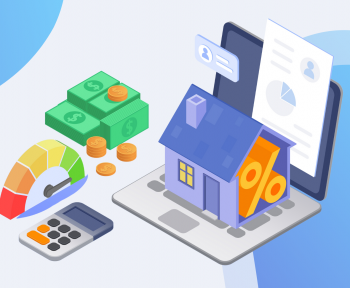As the financial ecosystem rapidly evolves, the value of data as a formidable asset cannot be underestimated. Data has emerged as a powerful mechanism for businesses to gain valuable insights and drive strategic decision-making. The lending industry is no exception, and modern lenders are increasingly leveraging data insights for loan collections. Data insights are being used to transform processes, leading to reduced delinquencies and enhanced operational efficiency. By examining and comprehending the data pertaining to loans and borrowers, targeted strategies are put into action.
Data insights have the ability to transform the collections process by providing lenders with a wealth of information and actionable intelligence. By harnessing the power of advanced analytics, machine learning algorithms, and predictive models, financial institutions can now make informed decisions, optimize resource allocation, and maximize recovery rates.
Lenders’ efforts to develop a clear and effective loan collection system are supported in several ways by data analytics. Some of these are discussed below.
Predictive Analytics
Predictive analytics is a powerful tool that leverages data for debt collections analytics. By analyzing historical loan performance data and incorporating various factors such as borrower credit scores, income levels, and employment stability, lenders can develop models to predict the probability of default or delinquency for individual borrowers.
These predictive models enable lenders to identify potential problem loans at an early stage, allowing them to take preventive measures and mitigate risks. For instance, if the model predicts a high probability of default for a particular borrower segment / product type / business region, the lender can proactively reach out to the borrower, offer assistance, or suggest alternative repayment plans. By intervening early, lenders can significantly reduce the likelihood of default and improve overall collection rates. With such all-encompassing benefits, the global predictive analytics market size is expected to reach a multimillion-dollar valuation by 2030, as per an industry report.
Segmentation and Prioritization
The capability to categorize borrowers into groups based on their risk profiles, repayment tendencies, and other pertinent factors is one of the main advantages of data analysis in loan collections. Lenders can prioritize their collections efforts by categorizing borrowers into different segments, such as low, medium, and high-risk. This segmentation allows lenders to allocate their resources effectively and focus on borrowers who require immediate attention.
Through data analysis, lenders can identify patterns and trends that indicate potential default or delinquency. For instance, borrowers who frequently miss payment deadlines or have a history of making late payments may be marked as higher risk. By focusing on these high-risk segments, lenders can implement proactive measures such as targeted communication, early intervention, and personalized repayment plans to prevent delinquencies.
Tailoring strategies as per borrower preferences
Data analysis plays a crucial role in helping lenders tailor strategies as per borrower preferences. By analyzing borrower data, lenders can gain valuable insights into their preferences, behaviors, and characteristics. These data insights for loan collections allow lenders to understand borrowers on a deeper level and create personalized strategies that resonate with their individual needs. Here’s how data analysis helps lenders tailor strategies:
- Communication Channels: Analysis of data shows which channels borrowers prefer to communicate through. By examining past communication patterns and responses, lenders can identify whether borrowers prefer emails, text messages, phone calls, or other channels. This knowledge enables lenders to reach out to borrowers through their preferred channels, increasing the chances of engagement and response.
- Timing and Frequency: Data analysis helps lenders determine the optimal timing and frequency of communication. By analyzing borrower behavior and response patterns, lenders can identify the times when borrowers are most likely to be receptive to communications. This allows lenders to schedule reminders, payment notifications, or collection efforts at the most opportune moments, ensuring better engagement and response rates.
- Content Customization: By analyzing borrower data, lenders can gain insights into their financial circumstances, transaction history, and preferences. This information enables lenders to customize the content of their communications. For example, lenders can tailor messages to address specific financial concerns, offer relevant repayment options, or provide personalized financial advice. Customized content shows borrowers that lenders understand their unique situations, fostering a stronger connection and increasing the likelihood of cooperation.
- Language preference: By examining previous communication records, such as emails, chat transcripts, or customer service interactions, lenders can ascertain the language that borrowers prefer to use. By examining the language of written or verbal communications, lenders can understand the preferred language of individual borrowers or specific customer segments.
Data-driven Communication
Effective communication plays a crucial role in loan collections, and leveraging data insights can enhance this aspect significantly. By analyzing borrower data, lenders can better understand borrowers’ preferences, communication channels, and response patterns. This knowledge enables lenders to personalize their communication strategies, increasing the likelihood of borrower engagement and cooperation.
For instance, if data analysis reveals that a borrower is more responsive to email reminders than phone calls, lenders can tailor their communication accordingly. By using the preferred channel, lenders can ensure that their messages reach the borrowers and improve their chances of timely repayment.
Data-driven communication also extends to the content of the messages. By analyzing borrower data and understanding their financial situation, lenders can craft personalized messages that address specific concerns or offer suitable repayment options. This approach not only enhances the borrower’s experience but also improves the effectiveness of collection efforts.
Continuous Monitoring and Early Warning Systems
Data insights for loan collections can be leveraged to implement continuous monitoring and early warning systems, which enable lenders to track borrowers’ repayment behavior in real-time. By monitoring borrower accounts and transaction data, lenders can quickly identify signs of financial distress, such as missed payments, increased credit utilization, or sudden changes in spending patterns.
Early warning systems provide lenders with timely alerts, allowing them to take immediate action to prevent delinquencies or defaults. For example, if the system detects a borrower’s account balance falling below a certain threshold, the lender can proactively reach out to the borrower, offer financial counseling, or suggest alternative payment options.
Furthermore, continuous monitoring and early warning systems also help lenders detect fraudulent activities or identify potential cases of identity theft. By leveraging data insights, lenders can identify suspicious transactions, monitor credit inquiries, and take appropriate measures to safeguard their borrowers and mitigate risks.
The future of data in debt collections
Reports indicate that the big data market in India is expected to reach INR 253.22 billion by 2027. With increased competition and pressure on profitability, leveraging data insights for loan collections is becoming increasingly vital in optimizing operations. By segmenting borrowers, using predictive analytics, adopting insights driven communications, and establishing robust monitoring systems, lenders are unlocking higher efficiencies to improve their collection rates, reduce delinquencies, and enhance the borrower experience.
However, it is essential to approach data analysis and utilization responsibly, ensuring compliance with data privacy regulations and safeguarding borrower information. By striking the right balance between data-driven decision-making and ethical practices, lenders can unlock the full potential of data insights in optimizing loan collections and driving business success in the lending industry.
FAQs:
- What is the application of analytics in the lending sector?
Data analytics in the lending sector helps to improve decision making, mitigate risk, and increase profitability. Some of the specific applications of data analytics in lending include credit risk assessment, fraud detection, customer segmentation, portfolio health management, and post-disbursal loan servicing. Data analytics help lenders stay informed when formulating collections strategies, identify problems, and take corrective action as needed.
- What is the importance of big data analytics for banks and finance?
Big data analytics is the process of extracting meaningful insights from large datasets. It is becoming increasingly important for banks and other financial institutions as they generate more and more data. This data can be used to improve decision-making, reduce risk, and increase profitability.
Here are some specific benefits of big data analytics for banks and finance:
- Improved decision-making: Big data analytics can be used to analyze historical data to identify trends and patterns. This information can then be used to make better decisions about lending, investment, and risk management.
- Reduced risk: Big data analytics helps identify fraudulent transactions and potential risks. This information can then be used to mitigate those risks.
- Increased profitability: Big data analytics can be used to identify new market opportunities and improve customer service. This can lead to increased revenue and profits.
- Enhanced customer experience: Big data analytics can be used to personalize the customer experience. This can lead to increased customer satisfaction and loyalty.
- Compliance: Big data analytics can be used to identify and mitigate compliance risks. This is important for banks and financial institutions that are subject to regulations.
3. How can data analytics help in debt collections?
Data analysis can benefit debt collections and debt recovery platforms in a number of ways, including:
- Identifying high-risk accounts: Data analysis can be used to identify accounts that are at high risk of default. This information can then be used to prioritize collections efforts and focus on the accounts that are most likely to be successful.
- Personalizing outreach: Data analysis can be used to personalize outreach to debtors. This can be done by understanding their financial situation, their communication preferences, and their likelihood of paying. By personalizing outreach, debt collectors can increase their chances of getting a response and resolving the debt.
- Predicting future behavior: Data analytics can be used to predict the future behavior of debtors. This information can then be used to develop strategies to prevent future defaults. For example, if data analysis shows that a debtor is likely to default on a loan, the debt collector can reach out to the debtor early on and offer them a payment plan or other assistance.
- Improving efficiency: Data analysis can be used to improve the efficiency of debt collection operations. This can be done by automating tasks, identifying areas for improvement, and tracking the performance of collections efforts. By improving efficiency, debt collectors can save time and money.
- Compliance improvement: Data analysis can be used to improve regulatory compliance. This is significant for debt collectors who must adhere to laws. For instance, data analysis can be used to keep track of the quantity and nature of calls made to debtors. The use of this data can then be made to confirm that debt collectors are abiding by regulatory bodies.





